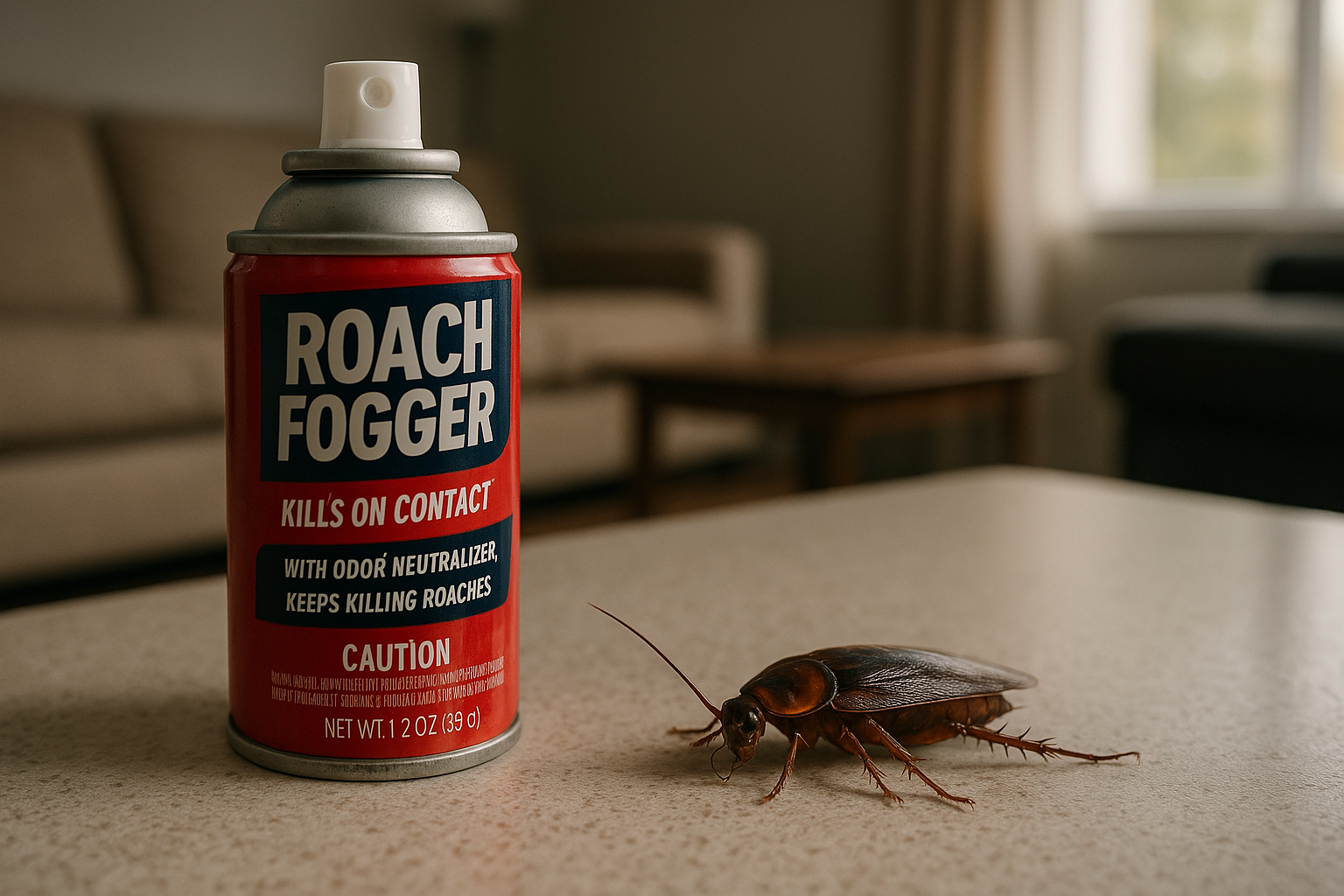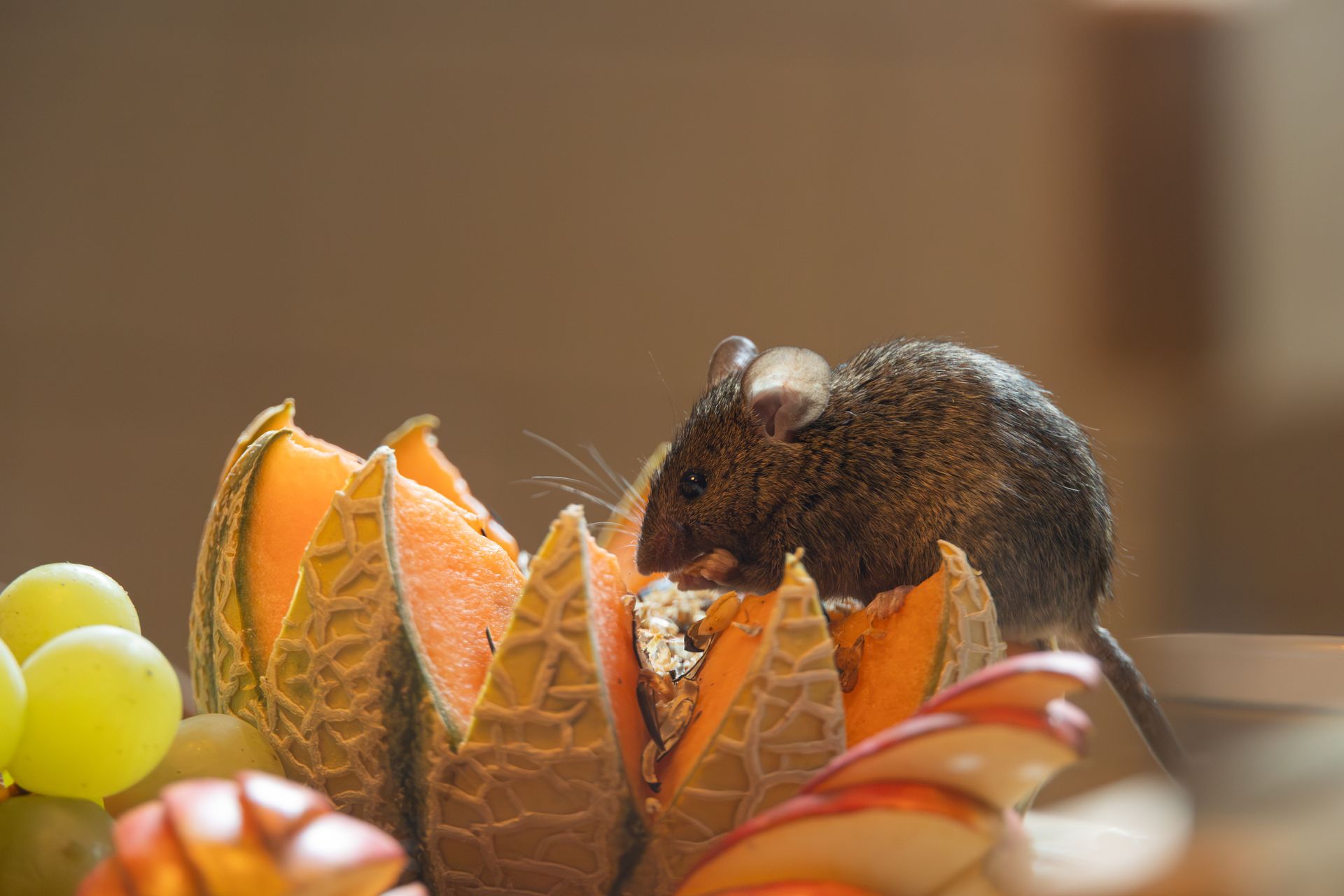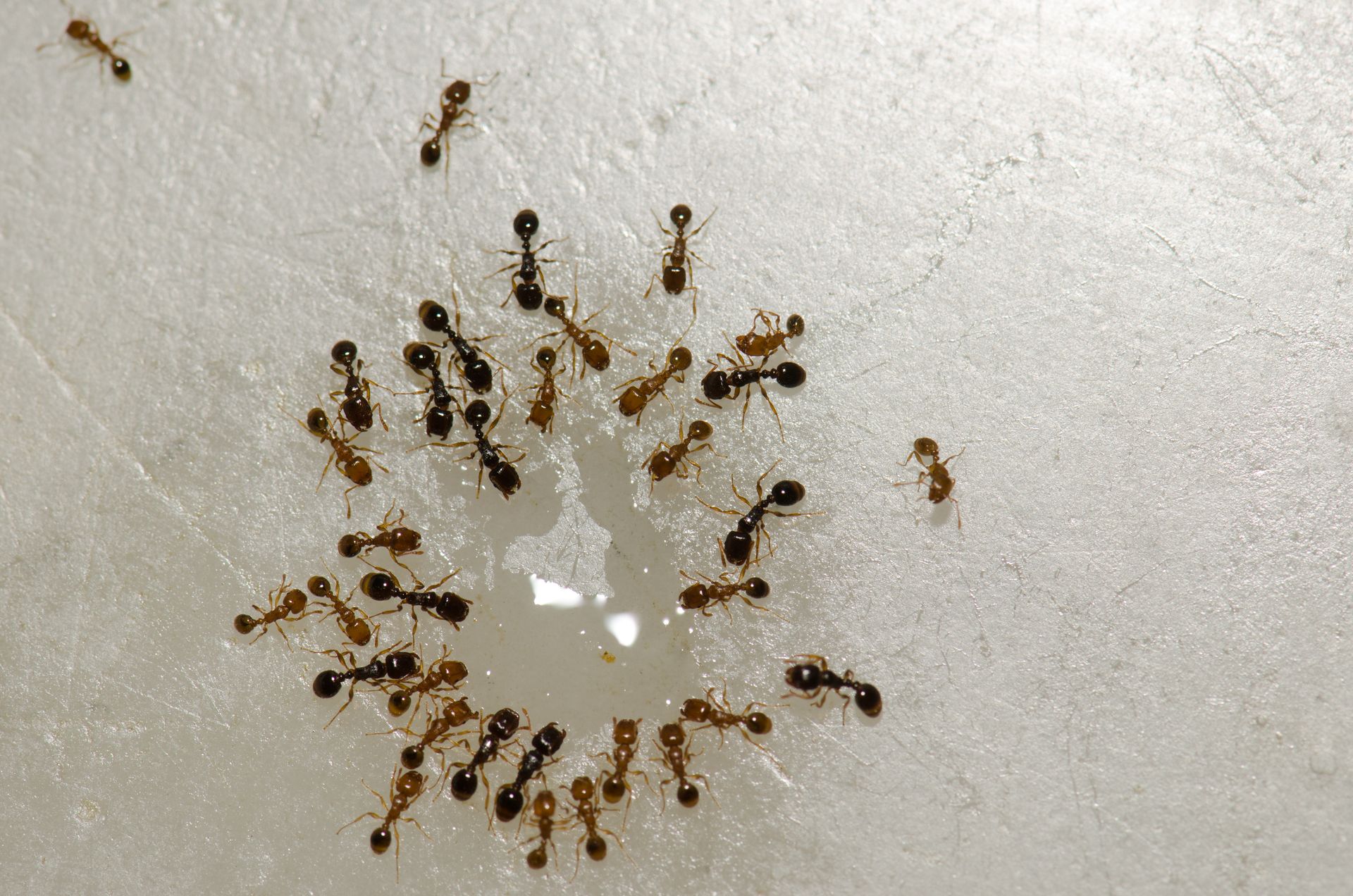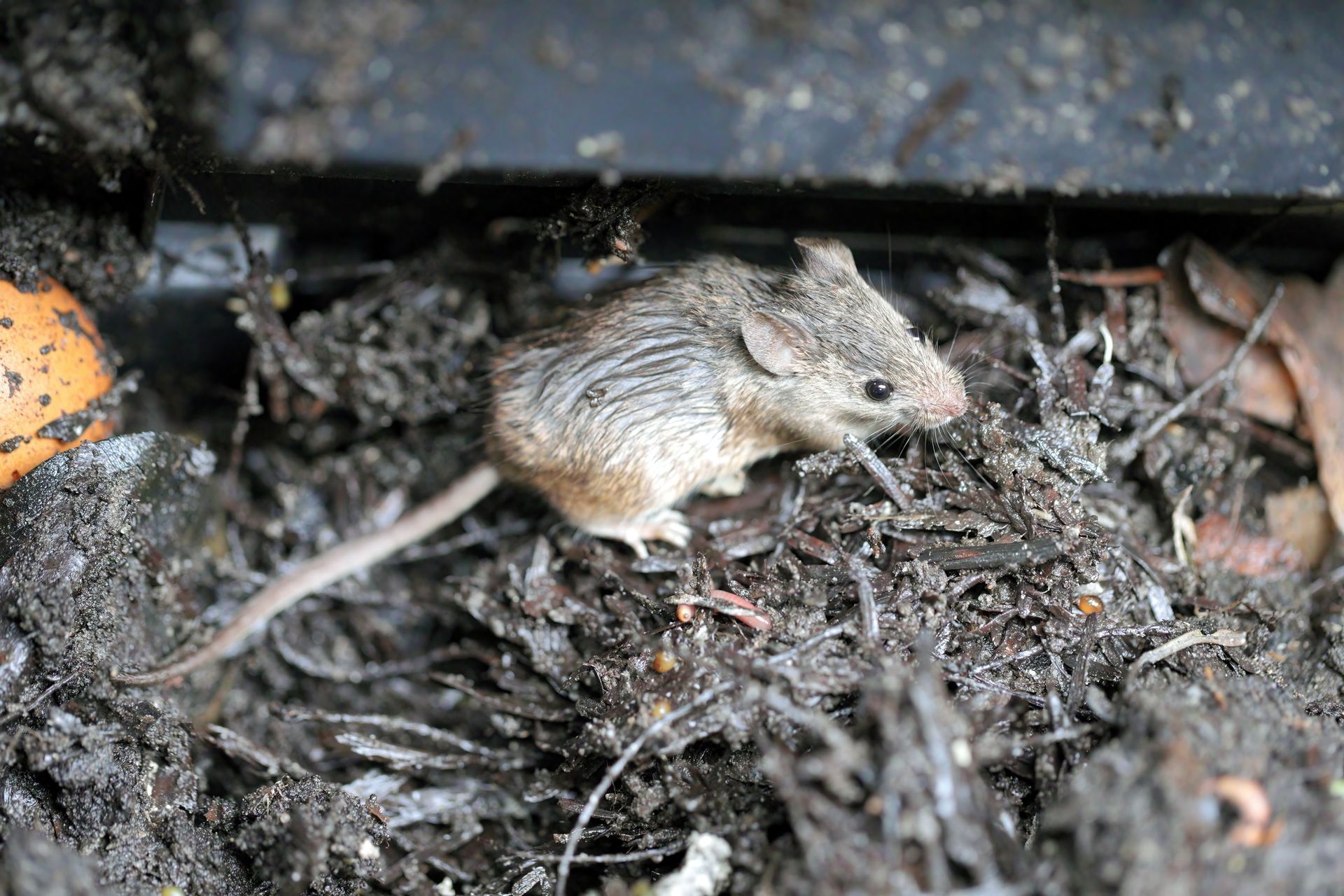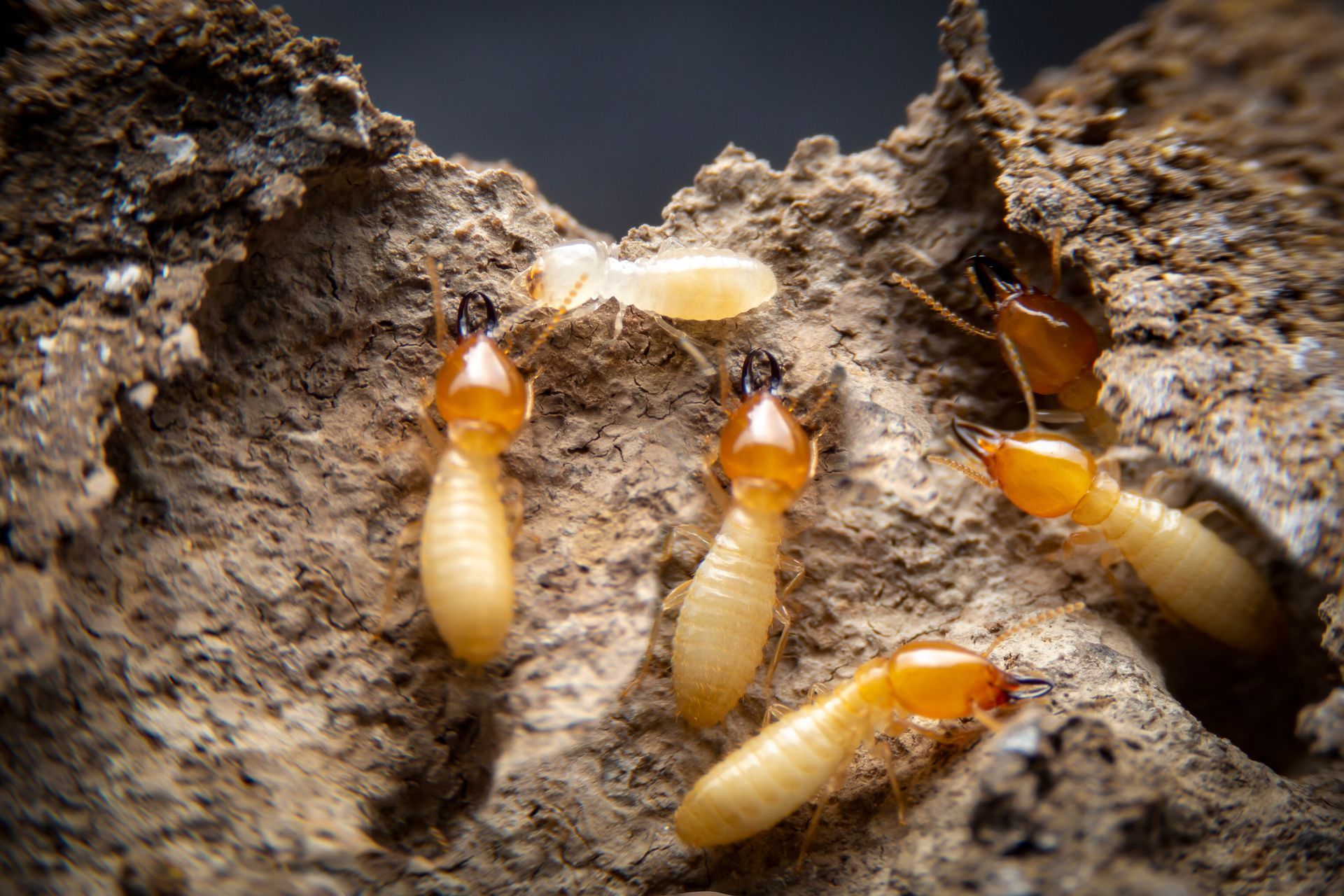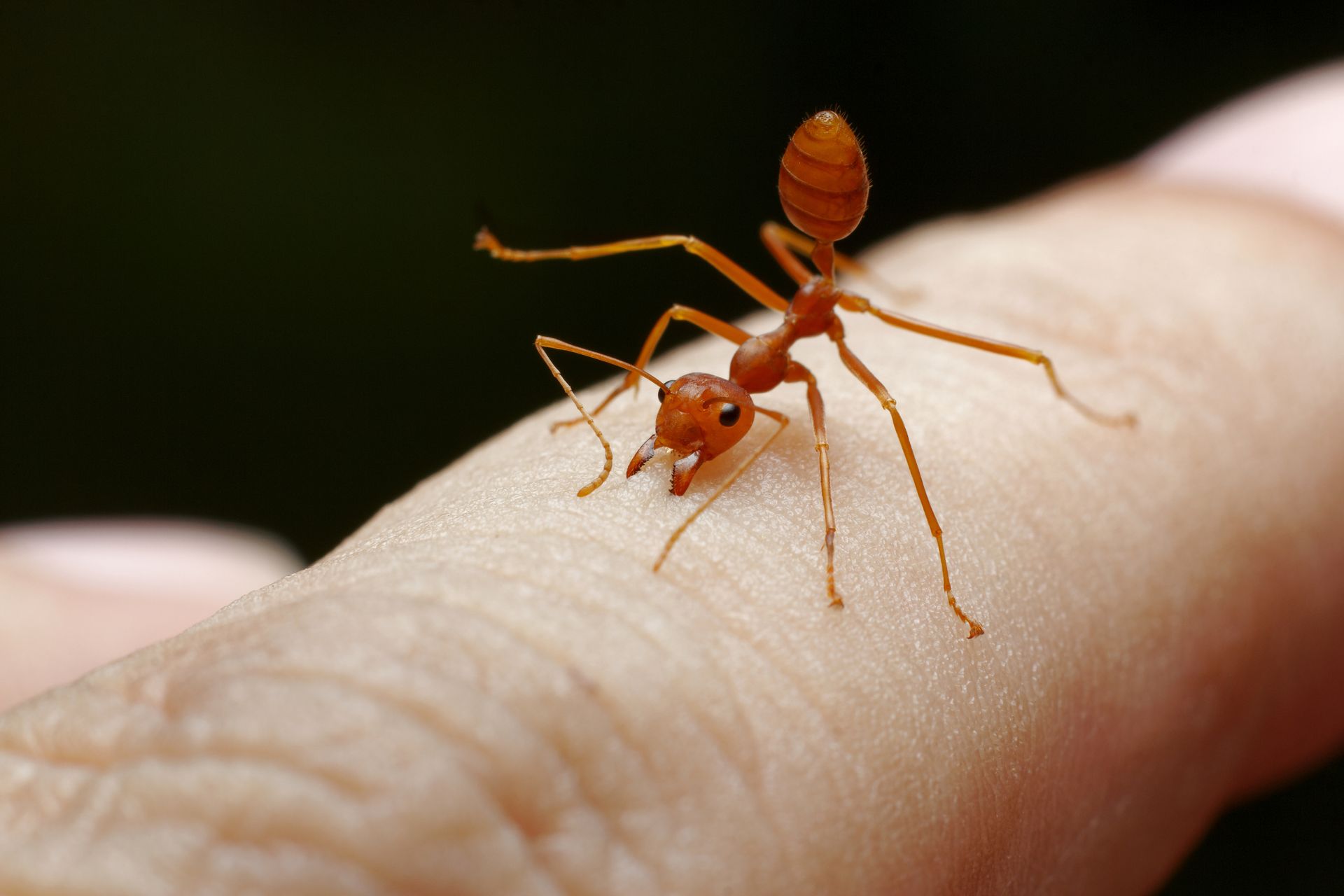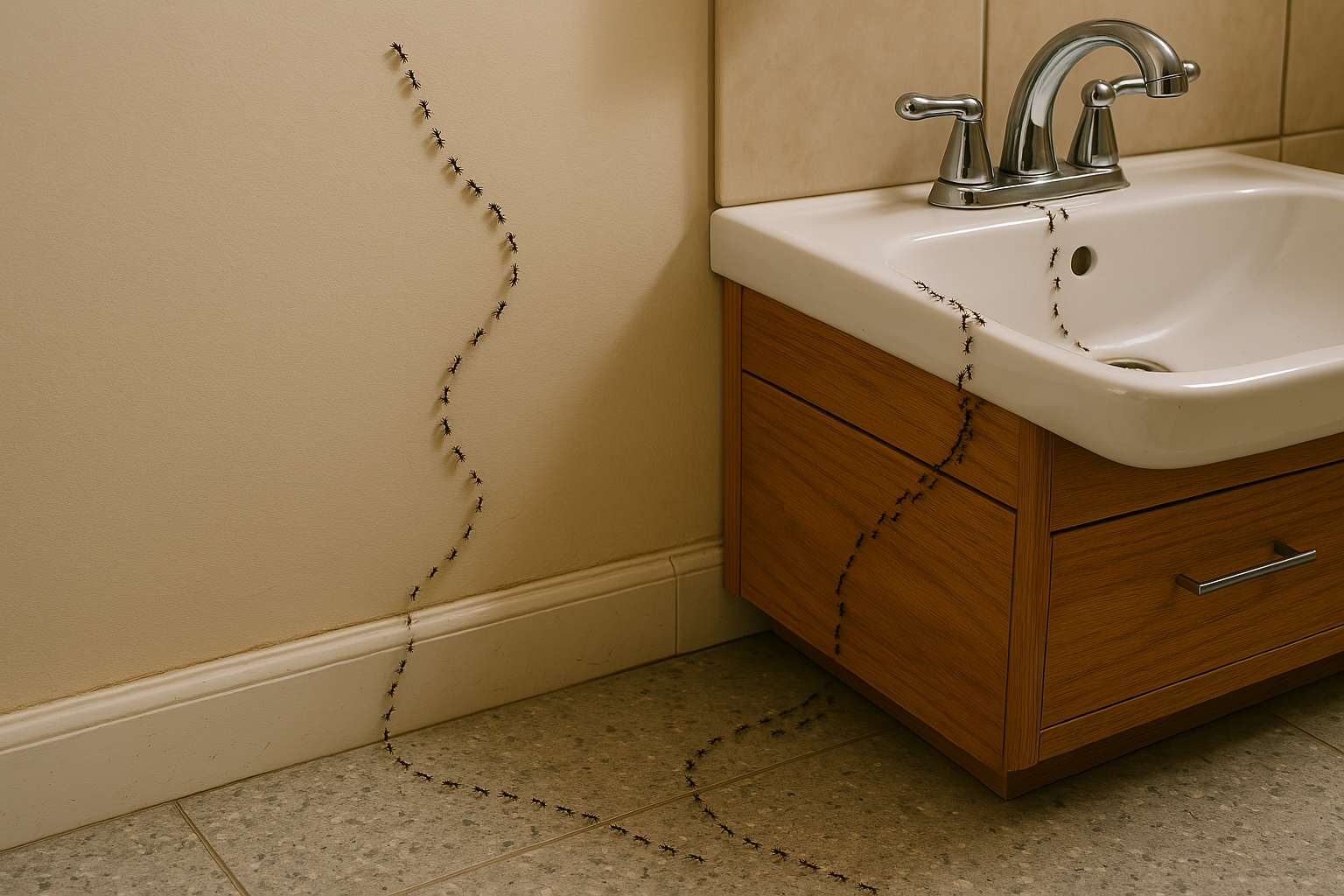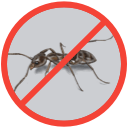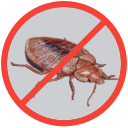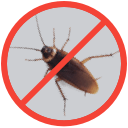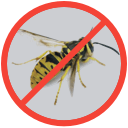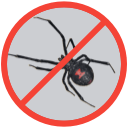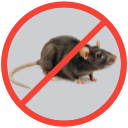Brown Banded Cockroaches: Identification, Control & Prevention
Brown banded cockroaches (*Supella longipalpa*) are distinctive indoor pests that present unique challenges for homeowners across the United States. These small, resilient insects earn their name from the two prominent light brown or yellowish bands that cross their wings and abdomens, creating a striped appearance that sets them apart from other cockroach species. Unlike their moisture-loving relatives, brown banded cockroaches demonstrate a remarkable preference for dry, warm environments, making them particularly problematic in areas of the home where other cockroach species rarely venture. This unique characteristic, combined with their ability to reproduce rapidly and hide in elevated locations, makes understanding and controlling these pests essential for maintaining a healthy, pest-free home environment.
What Are Brown Banded Cockroaches?
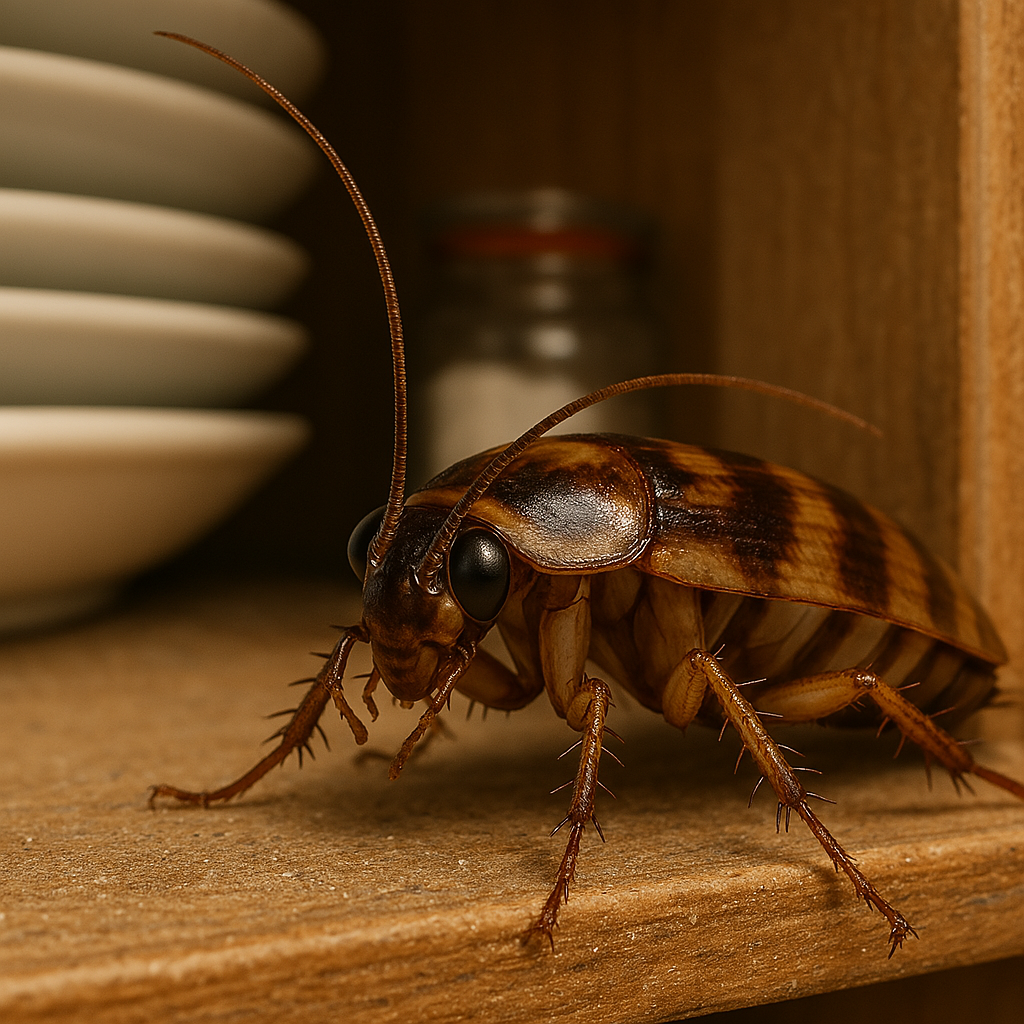
Scientific Classification and Origins
The brown banded cockroach belongs to the scientific classification Supella longipalpa. Historical records indicate that brown banded cockroaches originated in Africa before spreading globally through international trade and commerce. Their arrival in the United States marked a significant expansion of their range, with the first documented specimens collected in Miami, Florida in 1903. From this initial introduction point, the species rapidly dispersed throughout the continental United States, establishing breeding populations in virtually every state except Alaska.
Geographic Distribution
Today, brown banded cockroaches maintain established populations throughout the United States, with particularly dense infestations in the northeastern, southern, and midwestern regions [1]. Their success in these areas correlates strongly with the prevalence of climate-controlled buildings that provide the consistent warmth these insects require for survival and reproduction.
Research indicates that brown banded cockroaches thrive optimally in environments maintaining temperatures between 77°F and 91°F (25°C to 33°C), with populations showing the highest reproductive success at the mid to upper end of this range [2]. This temperature preference explains their absence from Alaska and their limited outdoor survival in cooler climates, where they remain entirely dependent on heated structures for year-round survival.
Identifying Brown Banded Cockroaches
Physical Characteristics
Adult brown banded cockroaches measure between 10 to 14.5 millimeters in length (roughly half an inch long) [3], making them one of the smaller domestic cockroach species. Their overall coloration ranges from tan to dark brown, with the characteristic two transverse light-colored bands providing the most reliable identification feature. These bands appear yellowish-brown to light brown and extend across both the wings and abdomen, though wing coverage may partially obscure them in some individuals.
The body structure follows typical cockroach anatomy, featuring a flattened, oval shape that allows them to squeeze through remarkably narrow spaces. Six spiny legs provide exceptional mobility, while two long, thread-like antennae serve as sensitive organs for detecting environmental changes, food sources, and potential threats. Their compound eyes, positioned on the sides of the head, offer a wide field of vision essential for their nocturnal lifestyle.
Male vs. Female Differences
Sexual dimorphism in brown banded cockroaches presents several distinct characteristics that aid in identification. Male specimens appear noticeably more slender than females and possess fully developed wings that extend beyond the tip of their pointed abdomens. These functional wings enable males to fly, though they typically only do so when disturbed or when seeking mates.
Female brown banded cockroaches exhibit a broader, more robust body shape with shortened wings that leave portions of their rounded abdomens exposed. This wing reduction renders females flightless, though they compensate with exceptional climbing abilities [4]. Females also tend to display darker coloration than males, particularly on the posterior segments of their abdomens where egg production occurs.
Nymph Identification
Immature brown banded cockroaches, called nymphs, emerge from eggs measuring approximately 3 millimeters in length. These juveniles lack wings entirely but display the characteristic banding pattern even more prominently than adults, as no wing coverage obscures the markings. The bands appear particularly vivid against the nymphs' darker brown bodies, making young brown banded cockroaches relatively easy to identify despite their small size.
Throughout their development, nymphs undergo between six and eight molting events, gradually increasing in size with each successive stage. Early instars (molting stages) may appear almost black with bright yellow bands, while later stages progressively lighten to match adult coloration. The entire nymphal development period varies with temperature but typically requires 90 to 276 days under normal household conditions [5].
Brown Banded vs. Other Cockroach Species
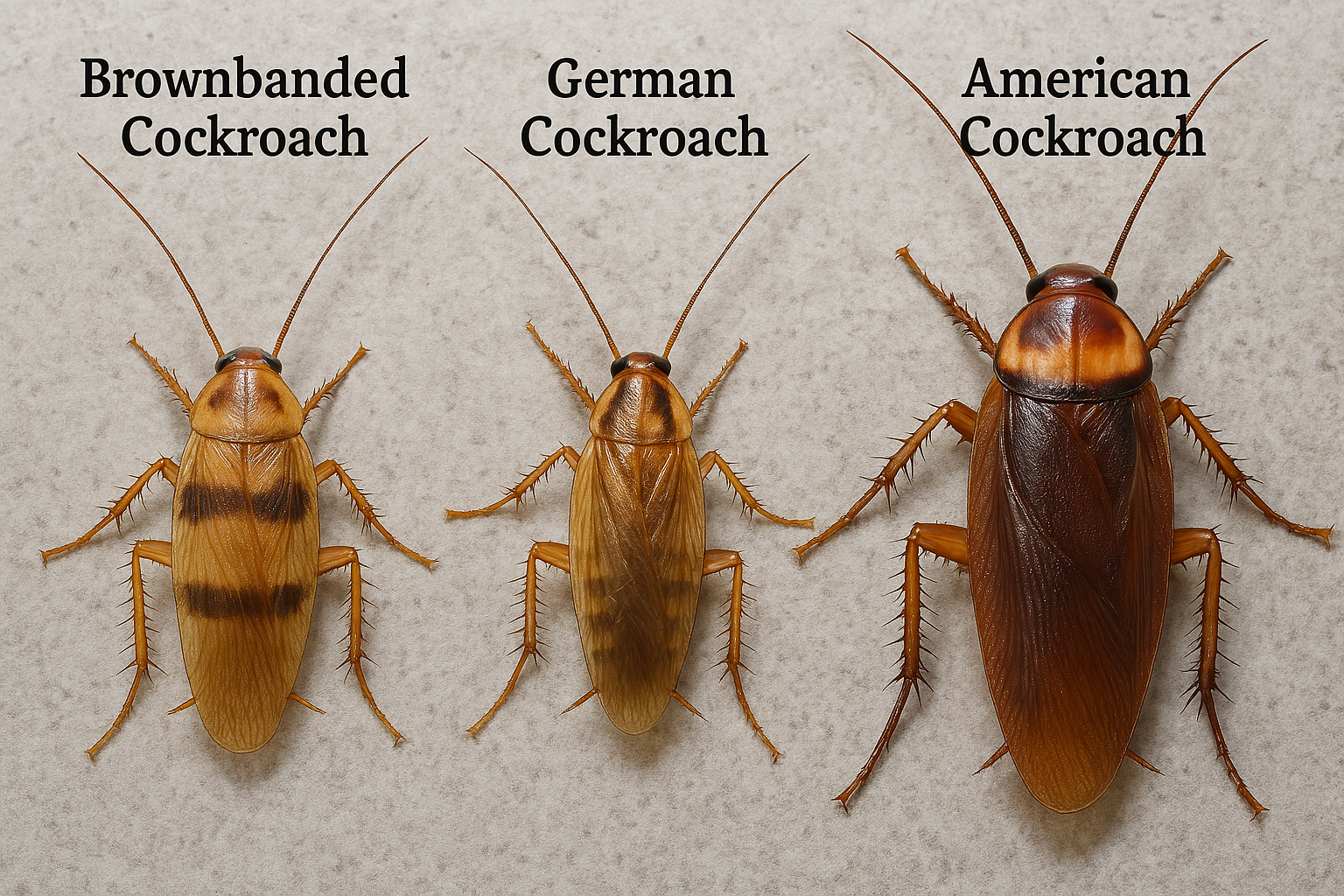
Brown Banded vs. German Cockroaches
While brown banded and German cockroaches (Blattella germanica) share similar sizes and indoor habitats, several key differences distinguish these species. German cockroaches measure slightly larger at 13-16 millimeters and display two dark parallel stripes running lengthwise on their pronotum, contrasting with the transverse bands of brown banded cockroaches.
Habitat preferences provide another crucial distinction. German cockroaches require high humidity and typically concentrate in kitchens and bathrooms near water sources. Brown banded cockroaches thrive in dry conditions and distribute throughout entire buildings, often establishing populations in bedrooms, living rooms, and home offices where German cockroaches rarely venture.
Brown Banded vs. American Cockroaches
American cockroaches (Periplaneta americana) dwarf brown banded cockroaches, measuring 35-40 millimeters in length which is nearly three times larger. Their reddish-brown coloration lacks any banding pattern, and they possess a distinctive yellow figure-eight pattern on their pronotum. American cockroaches also prefer moist environments like basements, sewers, and drains, contrasting sharply with the dry habitat preferences of brown banded cockroaches.
Unique Identifying Features
Several features unique to brown banded cockroaches aid in positive identification. Their preference for elevated hiding spots includes behind picture frames, inside ceiling light fixtures, and within upper cabinets which differs markedly from other species that typically remain at ground level. Additionally, their egg capsules (oothecae) measure only 5 millimeters in length and display a distinctive yellowish-brown color, contrasting with the larger, darker oothecae of other common cockroach species.
Habitat and Behavior
Preferred Living Conditions
Brown banded cockroaches exhibit highly specific environmental preferences that influence their distribution within structures. Optimal conditions include temperatures consistently above 80°F (27°C). Unlike most cockroach species that require high humidity, brown banded cockroaches thrive in drier environments compared to other cockroach species [6].
This preference for warm, dry conditions explains their tendency to inhabit upper floors of buildings, where heat rises and moisture levels remain lower. They actively avoid the damp environments favored by other cockroach species, making them unlikely inhabitants of basements, bathrooms, or areas with plumbing leaks.
Indoor Hiding Spots
The vertical distribution of brown banded cockroaches within structures sets them apart from other domestic species. Common harborage sites include:
- Upper-level locations: Crown molding, ceiling corners, and the tops of window frames provide ideal hiding spots that combine warmth with protection from disturbance.
- Behind wall decorations: Picture frames, wall clocks, and hanging mirrors create perfect microenvironments that trap heat while providing concealment. The small gap between these items and the wall surface offers the tight spaces cockroaches prefer.
- Electronic equipment: The warmth generated by televisions, computers, and radio equipment attracts brown banded cockroaches. They often establish breeding populations within these devices, potentially causing damage through their accumulation of feces and shed skins (Nasirian, 2016).
- Furniture interiors: Dresser drawers, closet shelves, and the undersides of tables and chairs provide numerous hiding opportunities. Their common name "furniture cockroach" reflects this strong association with household furnishings.
Activity Patterns
Brown banded cockroaches display strongly nocturnal behavior, remaining hidden during daylight hours and emerging after dark to forage. Peak activity typically occurs 2-3 hours after sunset when human activity diminishes. However, severe infestations may force some individuals to forage during daylight as competition for resources intensifies.
Male brown banded cockroaches exhibit more active behavior than females, utilizing their flight capability to explore new areas and locate mates. Their flight pattern appears erratic and is typically triggered by disturbance rather than serving as a primary means of locomotion.
Life Cycle and Reproduction
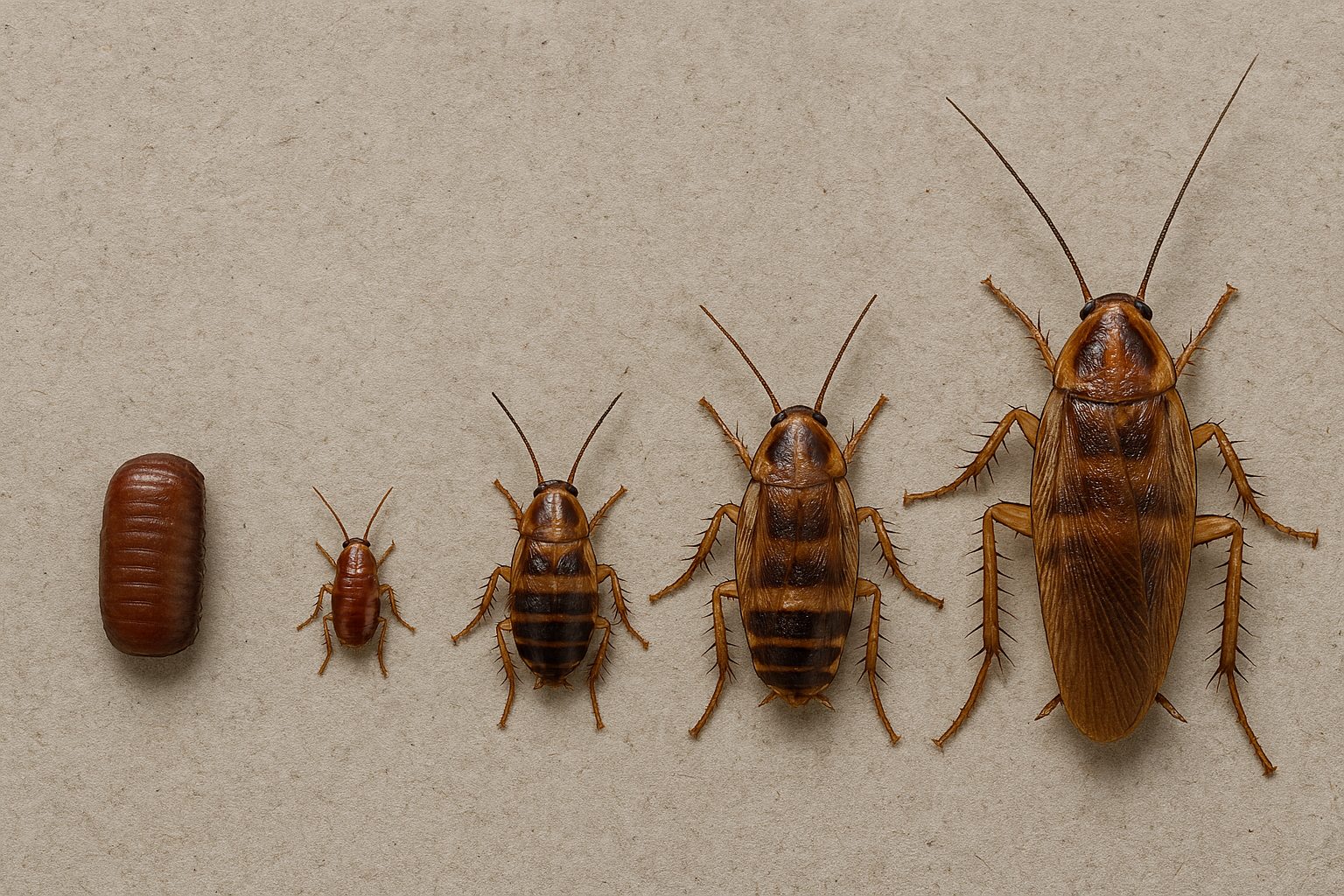
Egg Stage
Female brown-banded cockroaches generate egg capsules (oothecae) containing 10-18 eggs each, with individual females typically producing 13-14 capsules during their lifetime under optimal environmental conditions [7]. Unlike German cockroaches that carry their oothecae until just before hatching, brown banded females attach their capsules to hidden surfaces within 24-36 hours of formation.
The distinctive yellowish-brown oothecae measure approximately 5 millimeters in length and feature a purse-like shape with a pronounced keel along one edge. Females demonstrate careful selection of oviposition sites, preferring rough surfaces in protected locations such as the undersides of furniture, behind picture frames, or within the folds of stored clothing. This behavior of distributing oothecae throughout the environment contributes significantly to their rapid spread within structures.
Brown-banded cockroach egg incubation periods vary dramatically with temperature, ranging from 37-103 days. Temperature significantly influences development time, with optimal temperatures around 25-33°C (77-91°F) promoting faster development within this range [8]. Lower temperatures not only extend development time but also reduce hatching success rates.
Nymph Development
Newly emerged nymphs measure approximately 3 millimeters and immediately seek shelter in cracks and crevices near their hatching site. The nymphal stage of brown-banded cockroaches encompasses 4 instars (molting stages), with development time significantly influenced by temperature, humidity, and food availability [9]. The postembryonic development of brown banded cockroaches takes approximately 55 days at 86°F (30°C), with the complete life cycle averaging 161 days under typical conditions. Development time varies significantly with temperature and environmental conditions [10].
During each molt, nymphs shed their entire exoskeleton, leaving behind pale, translucent skins that serve as indicators of infestation. These cast skins accumulate in harborage areas and may trigger allergic reactions in sensitive individuals. Nymphs display the characteristic banding pattern from their first instar, though the bands appear more prominent against their darker bodies compared to adults.
Adult Lifespan
Adult brown-banded cockroaches typically survive 60-80 days depending on temperature conditions, with females living 13-45 weeks (91-315 days) under laboratory conditions. The reproductive potential of brown banded cockroaches is substantial, with a single female theoretically capable of producing over 600 offspring during her lifetime when accounting for multiple generations [11]. This high reproductive rate, combined with their cryptic behavior and wide distribution within structures, makes population control challenging once infestations become established.
Diet and Feeding Habits
Omnivorous Nature
Brown banded cockroaches demonstrate true omnivorous feeding behavior, consuming an remarkably diverse array of organic materials. Their digestive systems contain symbiotic bacteria, including Blattabacterium species, that enable them to extract nutrients from materials other insects cannot digest [12]. This metabolic flexibility allows them to survive in areas of homes where traditional food sources remain scarce.
Preferred Food Sources
While capable of eating almost any organic material, brown banded cockroaches show distinct preferences for high-starch content items.
Common food sources in homes include:
- Starchy materials: Book bindings, wallpaper paste, envelope glue, and postage stamps provide readily available starch sources. Their consumption of these materials often results in visible damage to books, important documents, and wallpaper edges.
- Human food: Crumbs, spills, and improperly stored food items attract foraging cockroaches. They show particular preference for sweet substances, cereals, and baked goods.
- Organic debris: Dead insects, hair, fingernail clippings, and skin flakes provide sources of nutrition. In severe infestations, they may also consume feces from other cockroaches, facilitating disease transmission within the population.
Non-Food Items They Consume
The unusual dietary habits of brown banded cockroaches extend to numerous non-traditional food sources. They readily consume nylon stockings, displaying a particular attraction to those containing human perspiration residues. Similar attraction occurs with soiled clothing, where they feed on organic stains and human body oils.
Electronic devices suffer damage when cockroaches feed on wire insulation. They also consume leather goods, focusing on areas with accumulated body oils from handling. This diverse diet enables brown banded cockroaches to establish populations in areas of homes where other cockroach species would struggle to survive.
Health Risks and Dangers
Disease Transmission
Brown banded cockroaches pose significant public health risks through their role as mechanical vectors of numerous pathogens. These pathogens adhere to the cockroaches' legs and bodies as they traverse contaminated surfaces, subsequently transferring to food preparation areas, utensils, and human food. Beyond bacteria, brown banded cockroaches can also harbor species of parasitic worms and human pathogens capable of causing serious illness.
Allergies and Asthma
The allergenic properties of brown banded cockroaches create significant respiratory health hazards, particularly for children and individuals with pre-existing respiratory conditions. Cockroach allergens originate from multiple sources including feces, saliva, shed skins, and decomposing body parts [13]. These allergens persist in the environment long after successful pest elimination, requiring thorough cleaning to remove health hazards.
Clinical studies demonstrate that cockroach allergens trigger both allergic rhinitis and asthma exacerbations. Children exposed to cockroach allergens show increased rates of asthma development and more frequent emergency room visits for respiratory distress [14]. Regular exposure to these allergens may lead to sensitization in previously non-allergic individuals, expanding the population at risk for cockroach-induced respiratory symptoms.
Contamination Risks
The feeding behavior and habitat preferences of brown banded cockroaches create numerous opportunities for environmental contamination. As they move between harborage sites and feeding areas, they deposit feces, regurgitated materials, and defensive secretions containing aggregation pheromones. These materials not only produce unpleasant odors but also serve as chemical trails attracting additional cockroaches to the area.
The tendency of brown banded cockroaches to inhabit non-food areas of homes creates unexpected contamination risks. Their presence in bedrooms may contaminate bedding and clothing, while infestations in home offices can damage important documents and electronic equipment. This wide distribution throughout living spaces increases human exposure to cockroach-derived contaminants compared to species restricted to kitchen and bathroom areas.
Signs of Brown Banded Cockroach Infestation
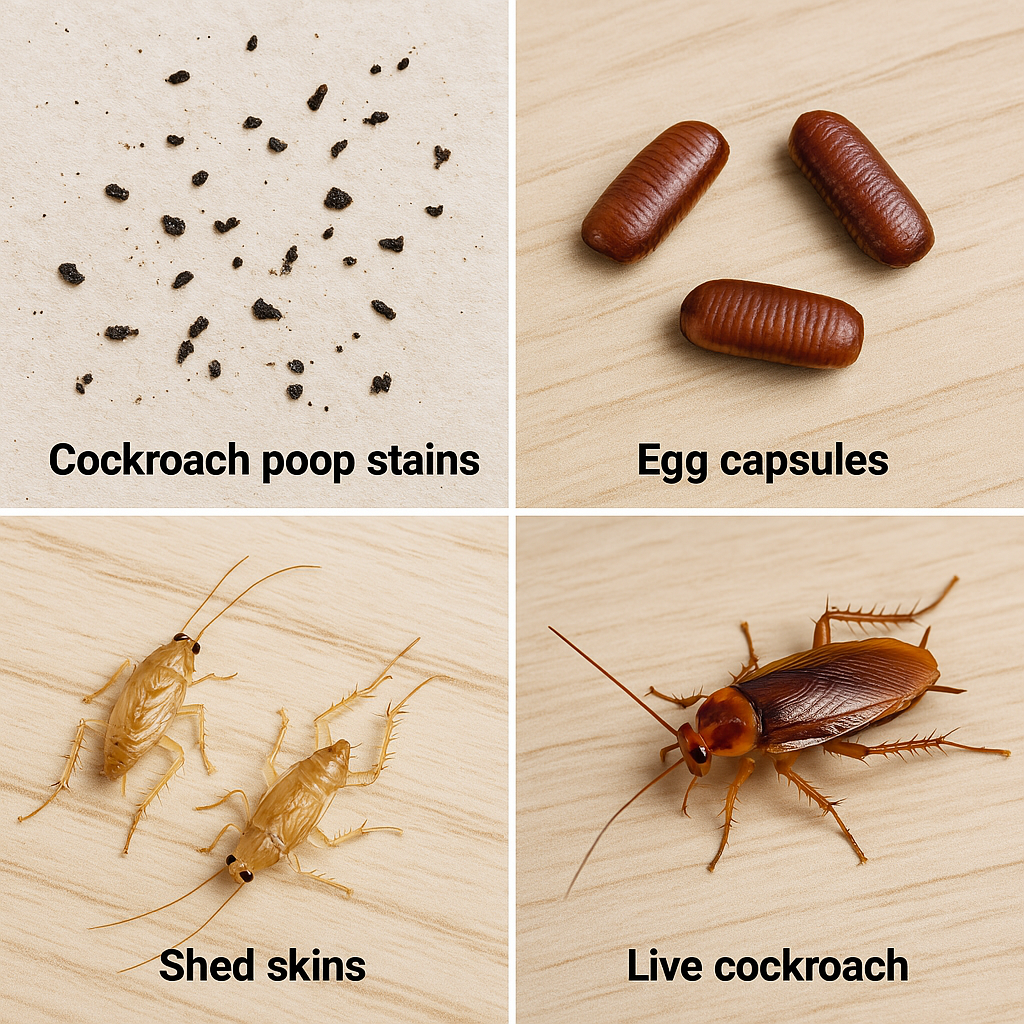
Visual Indicators
Detecting brown banded cockroach infestations requires careful observation of multiple indicators, as these cryptic insects excel at remaining hidden. Indicators include:
- Droppings and smear marks: Brown banded cockroach feces appear as small dark specks or spots, approximately 1 millimeter in length. Unlike the ridge-bearing droppings of German cockroaches, brown banded cockroach feces appear smooth and may create dark smears when deposited on vertical surfaces.
- Egg capsules: Empty or viable oothecae provide clear evidence of breeding populations. The distinctive purse-shaped capsules measure 5 millimeters long and display yellowish-brown coloration. Brown banded females glue their capsules to surfaces, where they remain long after eggs hatch.
- Shed skins: Cast exoskeletons from molting nymphs accumulate in harborage areas, appearing as translucent, cockroach-shaped shells. These skins retain the characteristic banding pattern and vary in size from 3 millimeters (first instar) to nearly adult size. Large accumulations of mixed-size shed skins indicate a long-established population with multiple generations present.
- Live sightings: Observing cockroaches during daylight hours suggests severe infestation levels, as competition for resources forces individuals from optimal hiding places. Seeing cockroaches at eye level or above strongly suggests brown banded rather than other species.
Other Signs
- Musty odor: Established brown banded cockroach populations produce a distinctive musty smell from aggregation pheromones and defensive secretions. The smell may be particularly noticeable when opening closed cabinets or disturbing furniture where cockroaches congregate.
- Damage to materials: Feeding damage appears as irregular holes or scraped areas on book bindings, wallpaper edges, and stored fabrics. Envelope flaps may show chewing damage where cockroaches consumed the glue.
- Allergy symptoms: Household members experiencing unexplained allergic symptoms, particularly respiratory issues that worsen at night or in specific rooms, may indicate cockroach allergen exposure.
Prevention Strategies
Sanitation Practices
Effective sanitation forms the foundation of brown banded cockroach prevention, though these pests' ability to survive on non-traditional food sources requires comprehensive approaches beyond simple kitchen cleanliness.
Regular vacuuming removes food particles, dead insects, and organic debris that sustain cockroach populations. Pay particular attention to areas under furniture, along baseboards, and in closets where debris accumulates undisturbed.
- Kitchen and bathroom protocols: Despite brown banded cockroaches' preference for dry areas, maintaining cleanliness in traditional cockroach habitats remains important. Wipe counters and sinks daily, ensuring no moisture or food residue remains. Store sponges and dishcloths in sealed containers when not in use, as these items attract foraging cockroaches.
- Food storage methods: Transfer all dry goods to sealed glass or heavy plastic containers immediately upon purchase. This practice not only prevents access but also eliminates the possibility of introducing cockroaches hidden in packaging. Pet food requires similar protection, including removal of food bowls between feedings.
- Trash management: Use trash cans with tight-fitting lids throughout the home, not just in kitchens. Empty wastebaskets regularly, particularly those in bedrooms and offices that may contain food wrappers or tissues with organic material. Clean trash can interiors monthly to remove accumulated residues that attract pests.
Exclusion Techniques
Physical barriers preventing cockroach entry and movement within structures provide long-term protection against infestations. Systematic inspection and sealing of potential entry points requires attention to surprisingly small gaps, as young nymphs can pass through cracks as narrow as 1 millimeter.
- Sealing entry points: Apply silicone caulk to cracks where walls meet ceilings, around window and door frames, and where utilities enter the structure. Pay special attention to upper-level entry points often overlooked during pest exclusion efforts. Install door sweeps on all exterior doors, ensuring no gaps remain when doors close.
- Interior barriers: Seal gaps around electrical outlets and switch plates with foam gaskets. Caulk cracks in walls, particularly in older homes where settling creates separation between building materials. Use copper mesh or steel wool to fill larger gaps before caulking, as cockroaches can chew through caulk alone.
Environmental Modifications
- Creating inhospitable conditions for brown banded cockroaches involves manipulating temperature, humidity, and habitat availability within the structure. While complete environmental control may be impractical, targeted modifications significantly reduce the attractiveness of your home to these pests.
- Decluttering: Reduce harborage sites by eliminating unnecessary items, particularly in bedrooms and living areas where brown banded cockroaches commonly hide. Store important papers in sealed containers rather than cardboard boxes. Minimize wall decorations in infested areas, as each picture frame or wall hanging provides potential hiding spots.
- Temperature management: While maintaining uncomfortably cool temperatures throughout the home isn't practical, be aware that spaces consistently above 80°F (27°C) provide optimal breeding conditions. Consider adjusting heating patterns in little-used rooms or storage areas to create less favorable conditions.
How to Get Rid of Brown Banded Cockroaches
DIY Treatment Options
Homeowners confronting brown banded cockroach infestations have several treatment options available, though success requires understanding these pests' unique behaviors and preferences..
- Bait stations: Gel and station baits containing fipronil, imidacloprid, or indoxacarb provide effective control when placed strategically. Position baits in upper cabinets, behind picture frames, and near ceiling moldings where brown banded cockroaches travel. These cockroaches' preference for starchy materials may reduce their interest in protein-based baits compared to other species.
- Insecticide dusts: Boric acid and diatomaceous earth desiccate cockroaches upon contact but require careful application in dry areas where brown banded cockroaches hide. Apply thin layers using a hand duster in wall voids, behind electrical outlets, and under furniture.
Professional Treatment Approaches
Licensed pest management professionals employ integrated strategies combining multiple control methods tailored to brown banded cockroaches' unique biology.
Professional treatments typically begin with thorough inspections using specialized equipment to locate hidden populations.
- Targeted applications: Professionals apply crack-and-crevice treatments using compressed air equipment, placing insecticides precisely where cockroaches hide. This method minimizes pesticide exposure while maximizing effectiveness against hidden populations. Upper-level treatments receive special attention, as DIY efforts often miss these critical areas.
- Insect growth regulators (IGRs): Products containing hydroprene or pyriproxyfen disrupt cockroach development, preventing nymphs from reaching reproductive maturity. While not immediately lethal, IGRs provide long-term population suppression when combined with conventional insecticides.
Why Foggers Don't Work
Total-release foggers (bug bombs) prove consistently ineffective against brown banded cockroaches for multiple reasons. The aerosol droplets produced by foggers fail to penetrate the deep cracks and voids where these cockroaches hide. Additionally, foggers primarily deposit pesticides on horizontal surfaces, missing the vertical and elevated locations brown banded cockroaches prefer.
Fogger use may actually worsen infestations by causing cockroaches to scatter deeper into wall voids and spread to previously uninfested areas. The repellent properties of many fogger ingredients create barriers that prevent cockroaches from contacting lethal doses while contaminating living spaces with unnecessary pesticide residues.
Treatment Challenges
Several factors make brown banded cockroach control more challenging than managing other domestic species:
- Scattered distribution: Unlike German cockroaches that aggregate in kitchens and bathrooms, brown banded cockroaches spread throughout entire structures. This distribution requires treating multiple rooms and vertical surfaces often overlooked in standard cockroach control programs.
- High location preferences: Accessing upper-level harborage sites requires ladders or extension equipment, making thorough DIY treatment difficult and potentially dangerous. Professional equipment and expertise ensure complete coverage of these critical areas.
- Resistance issues: Some brown banded cockroach populations show reduced susceptibility to pyrethroid insecticides commonly found in consumer products. Rotating active ingredients and incorporating non-chemical methods helps overcome resistance development.
Long-Term Management
Monitoring Techniques
Successful long-term management requires continuous monitoring to detect re-infestations before populations explode. Establish a monitoring program using multiple detection methods placed strategically throughout the structure.
Deploy sticky traps monthly in previous infestation areas, paying special attention to upper-level locations. Document captures by location and date, watching for trends indicating population growth. Supplement passive monitoring with monthly nighttime inspections using a flashlight to check known harborage sites.
Follow-Up Treatments
Initial treatments rarely eliminate entire populations due to brown banded cockroaches' cryptic behavior and protected egg stages. Schedule follow-up treatments at 2-3 week intervals to target newly hatched nymphs before they mature. Continue treatments for at least two months after the last cockroach sighting to ensure complete elimination.
Adjust treatment strategies based on monitoring results. If captures continue in specific areas, investigate for missed harborage sites or potential resistance issues. Consider rotating active ingredients if reduced effectiveness becomes apparent.
Preventing Reinfestation
Maintaining a cockroach-free environment requires ongoing vigilance and preventive measures. Inspect all incoming items, particularly used furniture, electronics, and cardboard boxes that may harbor hitchhiking cockroaches. Quarantine suspicious items in garages or outdoor areas before bringing them inside.
Establish regular deep-cleaning schedules focusing on areas where brown banded cockroaches previously lived. Vacuum thoroughly to remove allergens from former infestations while eliminating food sources for potential re-invaders. Maintain exclusion repairs and replace worn weather stripping promptly.
When to Call Professionals
Consider professional intervention when:
- DIY efforts fail to reduce populations after 4-6 weeks
- Cockroaches appear in multiple rooms or on multiple floors
- Allergic reactions occur in household members
- You discover cockroaches in sensitive areas like bedrooms or nurseries
- The infestation originates from neighboring units in multi-family housing
Professional pest management provides expertise, specialized equipment, and restricted-use products ensuring faster, more complete elimination while minimizing pesticide exposure risks.
Common Mistakes in Brown Banded Cockroach Control
Misidentification Issues
Accurate species identification drives successful control programs, yet many homeowners mistake brown banded cockroaches for German cockroaches due to their similar size. This confusion leads to inappropriate treatment strategies focusing on moisture-rich areas while ignoring the dry, elevated locations brown banded cockroaches prefer.
Professional identification considers multiple factors beyond size, including banding patterns, behavior, and habitat preferences. When uncertain, preserve specimens in alcohol for professional identification rather than guessing and potentially wasting time and money on ineffective treatments.
Wrong Treatment Applications
Applying treatments designed for German or American cockroaches often fails against brown banded infestations. Concentrating efforts in kitchens and bathrooms misses the majority of the population hiding in living rooms, bedrooms, and offices. Similarly, using moisture-activated granular baits in dry areas reduces effectiveness.
Many homeowners make the critical error of applying repellent sprays that scatter cockroaches throughout the structure without killing them. These products create barriers preventing cockroaches from contacting more effective treatments applied later.
Ignoring Non-Kitchen Areas
The tendency to associate cockroaches exclusively with food preparation areas causes many people to overlook brown banded cockroach populations in other rooms. Bedrooms, home offices, and living rooms often harbor the largest populations due to favorable temperatures and reduced disturbance.
Failing to treat furniture, electronics, and wall voids in these areas allows populations to persist and re-infest treated areas. Comprehensive control requires inspecting and treating all rooms, particularly upper-level areas in each space.
Inadequate Sanitation
While brown banded cockroaches survive on non-traditional food sources, some homeowners use this fact to justify poor sanitation practices. Although these pests can subsist on materials like glue and paper, providing easy access to conventional food sources accelerates population growth and makes control more difficult.
Maintaining high sanitation standards throughout the home, not just in kitchens, reduces carrying capacity and enhances treatment effectiveness. Regular cleaning also removes allergens from previous infestations, improving indoor air quality.
Contact EcoGuard for Brown Banded Cockroach Control
At EcoGuard Pest Management, our integrated pest management approach combines the latest treatment technologies with environmentally responsible practices, ensuring effective control while minimizing impact on your family and pets. We provide ongoing monitoring and prevention strategies to keep brown banded cockroaches from returning. Contact EcoGuard today for a thorough inspection and customized treatment plan that addresses your specific situation. Our experienced technicians will work with you to create a pest-free environment, protecting your home from brown banded cockroaches and the health risks they carry. Call now to schedule your consultation and take the first step toward comprehensive cockroach control.
Brown Banded Cockroaches FAQs
What do brown banded cockroaches look like?
Brown banded cockroaches are small insects measuring 10-14.5mm (about 0.5 inches) long with tan to dark brown coloring. Their defining feature is two light-colored transverse bands crossing their wings and abdomen. Males have full wings extending beyond their abdomen and can fly, while females have shorter wings exposing their broader abdomens. Nymphs lack wings but display prominent banding patterns throughout development.
Where do brown banded cockroaches hide?
Unlike other cockroach species, brown banded cockroaches prefer warm, dry locations in upper areas of rooms. Common hiding spots include behind picture frames, inside ceiling light fixtures, in upper kitchen cabinets, within electronic equipment, inside furniture, and along crown molding. They avoid the moist areas near sinks and plumbing that attract other cockroach species, instead distributing throughout bedrooms, living rooms, and offices.
Are brown banded cockroaches dangerous?
Yes, brown banded cockroaches pose significant health risks. Research shows they carry at least 33 types of bacteria including E. coli and Salmonella, 6 parasitic worms, and 7 human pathogens. They spread these disease-causing organisms by contaminating food and surfaces. Additionally, their feces, shed skins, and body parts contain allergens that trigger asthma and allergic reactions, particularly in children.
How do you get rid of brown banded cockroaches?
Effective elimination requires integrated approaches targeting their unique habits. Place gel baits in upper-level locations where they travel, apply insecticide dusts to wall voids and behind outlets, and maintain strict sanitation throughout the home. Professional treatment often proves necessary due to their scattered distribution and preference for hard-to-reach locations. Avoid foggers, which fail to reach their hiding spots and may spread the infestation.
What attracts brown banded cockroaches?
Brown banded cockroaches are attracted to warm temperatures above 80°F (27°C), starchy materials like book bindings and wallpaper glue, and dry environments with low humidity. They often enter homes through infested furniture, boxes, or electronics. Unlike other species, they don't require proximity to water sources, allowing them to thrive in any room providing warmth and organic materials for food.
Can brown banded cockroaches fly?
Only male brown banded cockroaches can fly, using their fully developed wings primarily when disturbed or searching for mates. Their flight appears erratic and covers short distances rather than sustained travel. Females cannot fly due to shortened wings that don't cover their entire abdomen, though both sexes excel at climbing walls and smooth surfaces to reach elevated hiding spots characteristic of this species.



